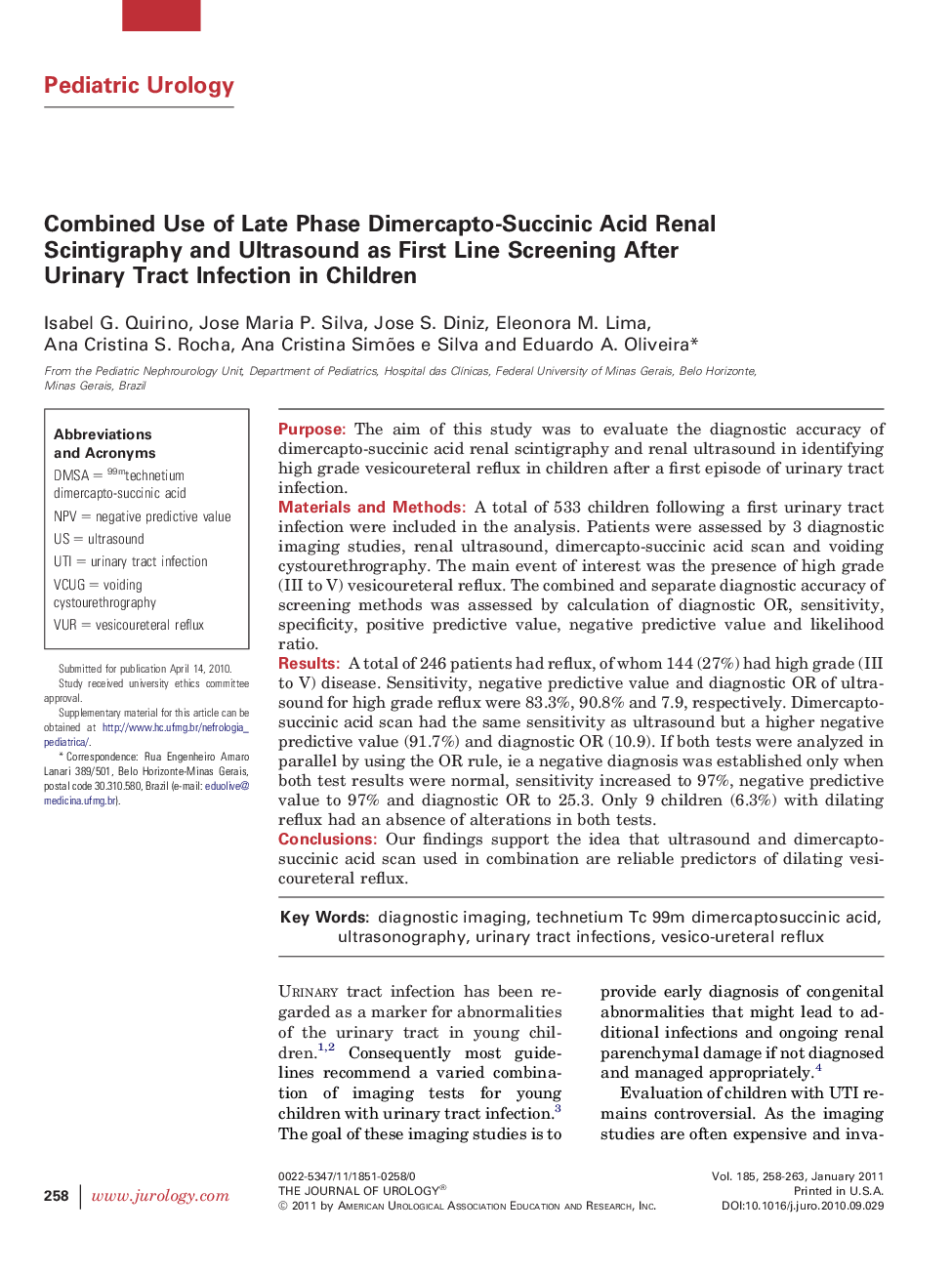| Article ID | Journal | Published Year | Pages | File Type |
|---|---|---|---|---|
| 3872351 | The Journal of Urology | 2011 | 6 Pages |
PurposeThe aim of this study was to evaluate the diagnostic accuracy of dimercapto-succinic acid renal scintigraphy and renal ultrasound in identifying high grade vesicoureteral reflux in children after a first episode of urinary tract infection.Materials and MethodsA total of 533 children following a first urinary tract infection were included in the analysis. Patients were assessed by 3 diagnostic imaging studies, renal ultrasound, dimercapto-succinic acid scan and voiding cystourethrography. The main event of interest was the presence of high grade (III to V) vesicoureteral reflux. The combined and separate diagnostic accuracy of screening methods was assessed by calculation of diagnostic OR, sensitivity, specificity, positive predictive value, negative predictive value and likelihood ratio.ResultsA total of 246 patients had reflux, of whom 144 (27%) had high grade (III to V) disease. Sensitivity, negative predictive value and diagnostic OR of ultrasound for high grade reflux were 83.3%, 90.8% and 7.9, respectively. Dimercapto-succinic acid scan had the same sensitivity as ultrasound but a higher negative predictive value (91.7%) and diagnostic OR (10.9). If both tests were analyzed in parallel by using the OR rule, ie a negative diagnosis was established only when both test results were normal, sensitivity increased to 97%, negative predictive value to 97% and diagnostic OR to 25.3. Only 9 children (6.3%) with dilating reflux had an absence of alterations in both tests.ConclusionsOur findings support the idea that ultrasound and dimercapto-succinic acid scan used in combination are reliable predictors of dilating vesicoureteral reflux.
